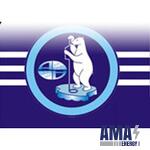Oceanographic Research and Research
A separate area is the work on providing hydrographic surveys, which include vertical sounding of waters, in order to determine corrections for the speed of sound in the measurement results, and to observe sea level fluctuations to tie the measurement to a single altitude system. The sounding of the water column is carried out directly from the survey vessel with either a CTD probe (determination of temperature and salinity of water, hydrostatic pressure, by which the speed of sound is calculated), or a sound velocity meter (SVP probe).
Observations of sea level fluctuations are carried out using autonomous recorders installed in the survey area, and at the nearest coastal points where it is possible to link observations to a single altitude system. Various interpolation procedures and hydrodynamic modeling are used to transfer level corrections to the measuring points.

Autonomous bottom stations
As a result of the work of the bottom stations, series of observations of wave parameters, sea level fluctuations, sea currents and ice drift can be obtained. The main working device is an acoustic Doppler current profiler (ADPT).

To study the morphometry of the ice cover, the bottom station includes an acoustic Doppler current profiler with the possibility of determining ice drift and an overhead sonar for ice profiling (GPL).

As a result of the operation of instruments installed at the bottom stations, an accumulation of an array of data on the sediment of keels of hummocky ice formations, the dynamics of ice and sea currents, and sea level.

